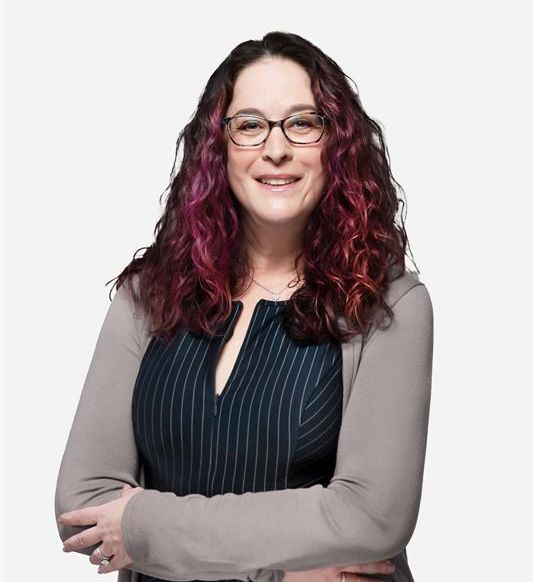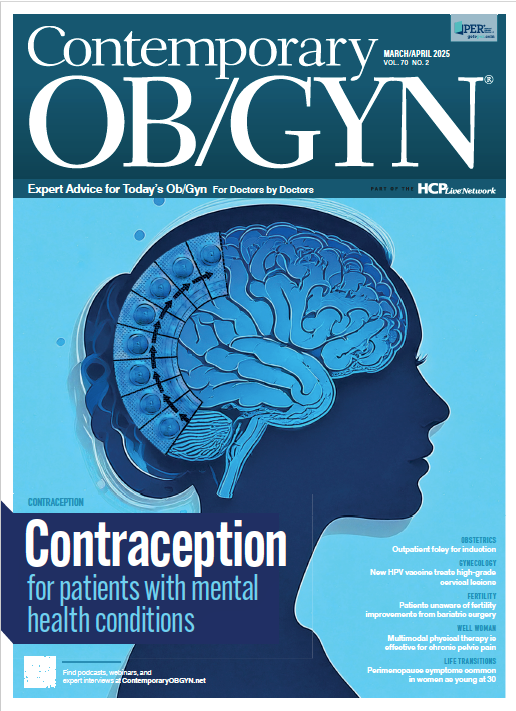From patients to patience: An ob-gyn’s journey from provider to patient
Stephanie Pearson, MD, FACOG, shares her journey transitioning from a provider to a patient following a work-related accident.
Stephanie Pearson, MD, FACOG

About the author: Stephanie Pearson, MD, FACOG, is a board-certified OB/GYN, educator, and visionary advocate for physician well-being based in the Philadelphia area. After a shoulder injury during a critical deliver yended her medical practice, she redirected her passion towards helping fellow physicians. Recognizing the critical importance of Disability and Life Insurance, Stephanie co-founded PearsonRavitz, an insurance brokerage and advisory firm serving all 50 states.
We all arrive at obstetrics and gynecology via many pathways. We practice differently; some specialize in obstetrics, whereas others specialize in gynecology. Our youth and bravado propel us through training and eventually to our attending roles. We are used to being in control, guiding our patients through life’s most vulnerable and joyous moments. None of us think injury or illness will alter our careers. Physicians may seem invulnerable, but we get sick and hurt just like everybody else. What happens when the tables are turned, and we find ourselves in the unfamiliar role of the patient? Spoiler alert: It is humbling, frustrating, and occasionally darkly comical.
The harsh reality of disabling conditions
The unthinkable happens, and our best-laid plans go up in smoke. According to the Social Security Administration, 1 in 4 of today’s 20-year-olds can expect to be out of work for at least a year because of a disabling condition before they reach normal retirement age.1 Although it is difficult to find exact numbers for physicians, the risk for obstetrician-gynecologists (ob-gyns) is compounded by our work’s physical and emotional demands. Genetics plays a role in some illnesses (cancer, cardiovascular disease, etc), but long hours in the operating room, repetitive motions, and poor ergonomics put us squarely in the danger zone for musculoskeletal disorders—the leading cause of disability claims.2
The patient perspective: Lessons in humility
I have often heard physicians comment that they have never known a colleague who left medicine due to an injury or illness. My practice must have been cursed. Over my time as a clinician, 6 of the 8 of us had our careers altered or shortened due to a disabling condition. I have spoken with many physicians, not just ob-gyns, about their experiences as patients and how it felt to switch roles.
It is incredibly difficult to go from seeing patients to being one. It takes a great deal of patience, grace, and understanding of the systems we were once a part of. Becoming a patient forced me to confront some uncomfortable truths. First, we are terrible patients. We know too much and yet not enough. Second, our health care system is deeply flawed. Waiting weeks or months for diagnostic tests and studies is often the norm. Deciphering health insurance policies? I’d rather perform a hysterectomy blindfolded. Third, it is often difficult to be treated by friends and colleagues.
Real stories of ob-gyn disabilities
A 2022 study in the British Journal of Surgery found that more than 70% of surgeons experience work-related musculoskeletal disorders during their careers.3 Illnesses do not discriminate.
The following are real cases from my files and conversations with a disability insurance lawyer:
- Torn shoulder labrum from a patient kick during a difficult delivery. She kept working and developed adhesive capsulitis. She pursued surgical intervention, but the symptoms did not resolve. Unable to practice. Total disability benefit.
- Multiple-level spine issues, which started as back pain, numbness, and weakness in all 4 extremities. He reduced his work hours and pursued surgical intervention, but his symptoms worsened. Unable to practice. Total disability benefit.
- Psoriatic arthritis with joint swelling, pain, and decreased range of motion. She was able to work part-time but had to give up surgery, which was her primary income stream. Total disability benefit.
- Progressive Ehlers-Danlos syndrome. She was able to perform office gynecology and received a partial disability benefit.
- Chronic biceps tendonitis and shoulder pain. He tried many medical modalities with no improvement. Unable to practice. Total disability benefit.
- Breast cancer. Multiple women. Each returned to work part-time during certain phases of treatment and received partial disability benefits.
- Myocardial infarction. Multiple physicians. Varying degrees of disability and ability to get back to work. Partial and total disability benefits.
- Fractured femur from a skiing accident. She had surgical intervention and could not bear weight for some time. She was able to work part-time. Partial disability benefits.
- Thyroid cancer. He underwent surgery, radiation, and chemotherapy. Unable to work due to fatigue and other symptoms. Total disability benefits.
- Cervical spine issues leading to pain and numbness in both upper extremities. Pursued surgical intervention, which set off lumbar spine problems. Difficulty with mobility and pain. Unable to practice. Total disability benefits.
When your colleagues question you
It is not only difficult to be a patient, but then the questions start from our peers and partners. Physicians report a barrier to receiving appropriate care is the lack of support from their employers/colleagues for time away.4 When will you be back? When can you take a call? How long until we can open your operating room schedule? You look normal; what do you mean you can’t do your job? These are only a few. You find yourself second-guessing what you know to be true. You feel like you are letting down those around you, and not just your patients. Feelings of shame and failure arise.
What we can do to protect ourselves
If my experience taught me anything, it is the importance of self-care and listening to our bodies. We are human, not superhuman. We must prioritize our well-being by:
Advocating for ergonomic workspaces in and out of the operating room
Prioritizing our physical health through preventive care and balanced workloads
Securing disability insurance early in our careers to ensure financial security if we can no longer work
Disability insurance is not just nice to have; it is a necessity. We need to focus on healing without the burden of financial strain.
Transitioning from an ob-gyn to a patient is an experience I would not wish for anyone, but it has made me a more empathetic person and a vocal advocate for change. To my fellow ob-gyns: Take care of yourselves and invest in your health and future.
References:
- Maleh J, Bosley T. Disability and death probability tables for insured workers who attain age 20 in 2023. Social Security Administration. July 2023. Accessed February 1, 2025. https://www.ssa.gov/oact/NOTES/ran6/an2023-6.pdf
- Health and productivity benchmarking 2022. Integrated Benefits Institute. 2024. Accessed February 1, 2025. https://www.ibiweb.org/tools-analysis/benchmarking
- Daruwalla AC, Patel B. 84 An analysis into the prevalence of work-related musculoskeletal disorders affecting surgeons: a systematic review. Br J Surg. 2022;109(suppl 6):znac269.417. doi:10.1093/bjs/znac269.417
- Benkhadra K, Adusumalli J, Rajjo T, Hagen PT, Wang Z, Murad MH. A survey of health care needs of physicians. BMC Health Serv Res. 2016;16(1):472. doi:10.1186/s12913-016-1728-4

